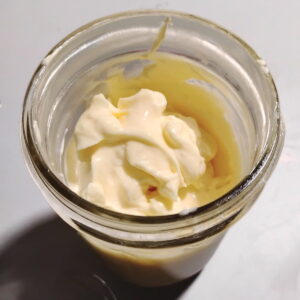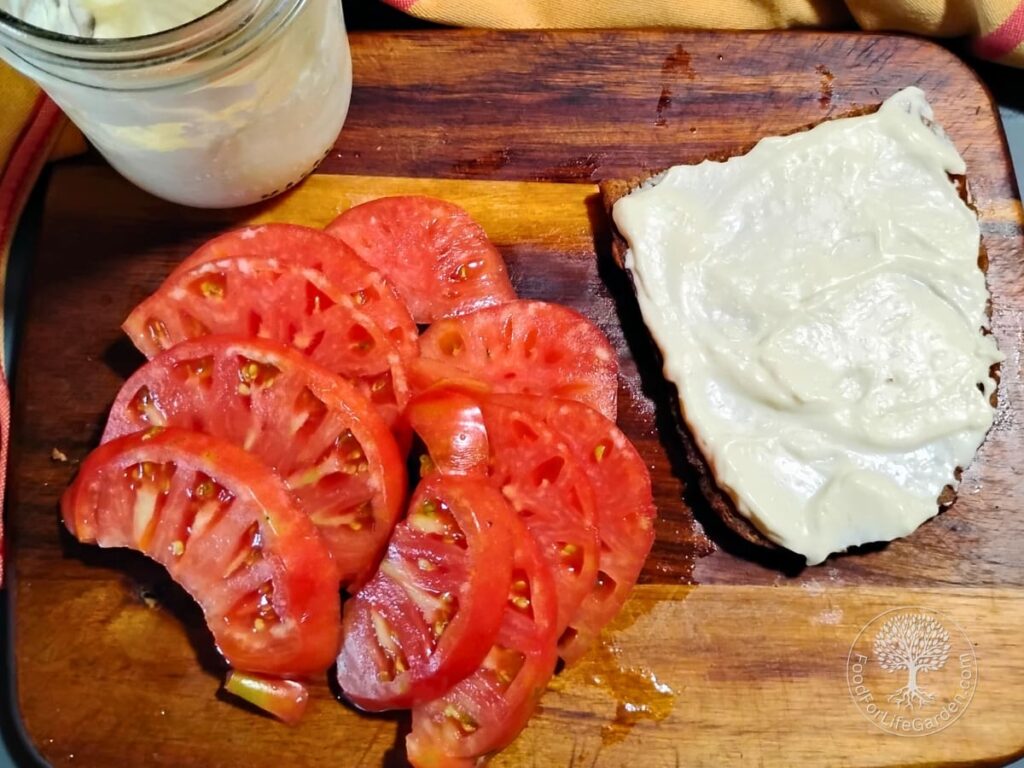
How To Make Homemade Mayonnaise
Homemade Mayonnaise is so easy to make, tastes fresh and delicious and is healthy! If you culture (ferment) it, it will keep for months in the refrigerator too.
Equipment
- A pint wide mouth mason jar - Or use the tall cup that came with your immersion blender.
- Immersion blender
Ingredients
Basic Mayo Ingredients
- 1 whole egg - or 2 egg yolks for a richer mayo
- 2 tsp prepared mustard - Or 1/2 tsp powdered + 1 tsp vinegar
- 2 tsp lemon juice
- 1 cup avocado oil
- ¼ tsp salt
Optional Fermentation (Natural Preservation) Ingredients
- 1 tbsp fermentation brine, kombucha, water kefir, or active whey - only needed if you want to preserve the mayo for longer than a week.
Optional flavorings
- pinch pepper, ground
- pinch cayenne pepper, ground optional
- 1 garlic clove, minced optional
Instructions
- Drop the whole egg or the yolks into the mason jar.
- Add prepared mustard (or ground mustard powder and vinegar), lemon juice, salt, desired flavorings, and fermentation starter if you choose to use it.
- Pour the oil over it and let everything settle for a few seconds.
- Set your immersion blender into the jar, touching the bottom. Start blending at high speed without lifting the blender.
- Once you see the bottom ingredients turn white after about 15 seconds, slowly raise your immersion blender upwards to incorporate more of the oil.
- Keep going up till you get to the top of the mix, go up and down once or twice more, and turn off and remove your blender.
- If there is a little oil floating at the top that's ok, just give it all a good stir.
- If you're fermenting your mayo, at this point put a lid on it and leave it to ferment for 8 hours at room temperature and then refrigerate. This will prolong shelf-life in the fridge and add probiotics and more flavor.
Notes
Tips For Making Homemade Mayonnaise

- Use all ingredients at room temperature.
- Be aware that using extra virgin olive oil could possible add a bitter flavor to your mayo. Blending olive oil at high speeds in a blender can damage the fatty acid coating from polyphenols, which are naturally present in olive oil. These polyphenols have a bitter flavor and that can become noticable when olive oil is treated this way. But not all olive oils are the same. This is mostly an issue with olive oil that contains a high amounts of polyphenols. Some high grade olive oils are high in polyphenols, others aren’t. So if you are intent on using olive oil in your mayo, and plan to make a huge batch for a party salad, maybe make a small amount first, taste it and if it tastes good, use the same ingredients to whip up the large batch. So if you make your mayo and find that it has a bitter flavor, your oil might be the culprit. If yours mayo is bitter, then try a different brand olive oil, or use one of the other healthy oils that do not cause bitterness, such as avocado or coconut oil. Then you can stir in up to a quarter cup of the EVO after blending for flavor.
- Likewise, blending garlic at high speeds can also add a bit of bitterness to the mayo. (If you’d like to read more about high-speed blending of olive oil and garlic, check out this article). In the case of garlic, you could use a garlic press or smash your minced garlic, and just stir the garlic into the finished mayo, or leave it out. I actually like my mayo without the garlic, as much as I love garlic, and add plenty of garlic to the food separately instead.
- Prepared mustard, or mustard powder with vinegar, is necessary for a successful emulsion and it is used in the original, traditional mayonnaise recipes. This is not an optional ingredient, it helps to stabilize your mayonnaise.
- You can make this with a food processor, but it may not turn out as well and it’s not fail-proof. If you want to try it, add all the ingredients, except for the oil into the bowl of a small food processor. Process till light and fluffy on high. Start dripping olive oil into it while the blades are running. One drop at a time and increasing the amount as you go, very slow.